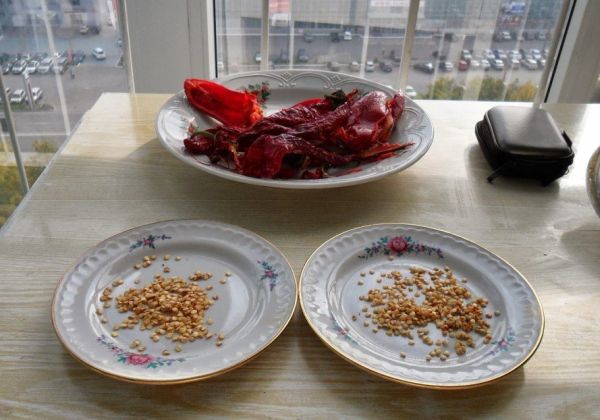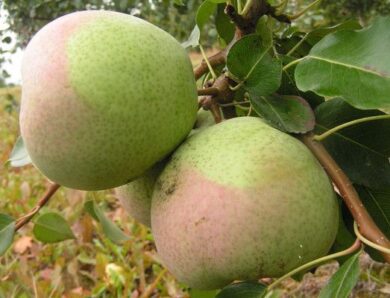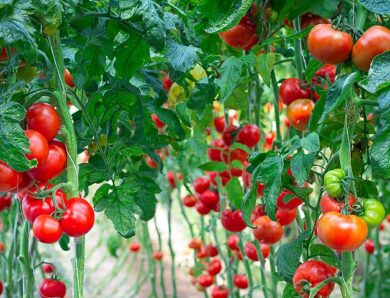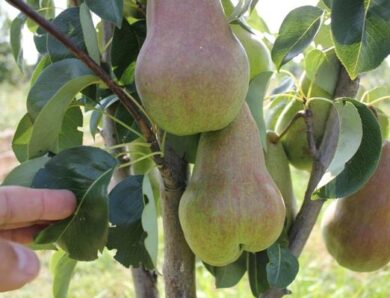
We grow sweet peppers on our own in the country
Sweet pepper is an ingredient in dozens of dishes. This vegetable has captivated many with its juicy fragrant fruit pulp and versatility, in any dish used. in addition, this vegetable is very diverse in appearance. Green pepper, yellow, red, orange, brown and even purple - all these fruits grow next to us and please the eye. Besides, to grow peppers is quite simple. Everyone can do it, you just need to know certain secrets of cultivation.
choose a variety
Today there are many varieties of sweet peppers, differing in fruit size, their color, form, wall thickness. Also, each variety has its own secrets of cultivation. This is a vegetable, who needs light. After all, it belongs to the heat-loving nightshade.
Varieties of sweet pepper can be divided into two groups.
Early varieties give a good harvest in a short period of time. These vegetables are ideal for growing in cold climates, which is characterized by frequent rains. The most famous early varieties are:
- Swallow - suitable for growing in a greenhouse or under film. The fruits are red in the shape of a cone.
- Snow White - a variety with conical fruits, designed for growing in a greenhouse. The color of ripe peppers is red.
- Madonna F1 is a hybrid of pepper, obtained by crossing different varieties. Its yellow fruits have a cubic shape.
- Dwarf - a low variety with conical fruits. Ripe green peppers have a yellowish color.
- Winnie the Pooh is a low-growing variety, great for growing both outdoors and in a greenhouse. The fruits are small. Their specific feature is simultaneous maturation.
Medium-ripe varieties in warm climates should be grown in a greenhouse, and in the hot - in the open ground. Such varieties are widely used:
- Maria F1 is a hybrid of pepper, which gives a rich harvest. Shrubs are tall, its stems reach a meter. The fruits have a ribbed structure and round-flat shape. In maturity, they are red.
- Othello F1 is a hybrid with large fruit cones. Peppers have a specific purple color, which changes during ripening to brown.
- Tenderness - designed for growing in a greenhouse. The variety gives a good harvest. Fruits in the form of truncated-oval cones are red.
- Novogoshary - low-growing variety with large red flattened-rounded fruits. The fruiting period of the plant is quite long - 45 days.
growing seedlings
Most peppers are grown seedlings. It is important to choose the right variety of plants and follow the rules of growing vegetables at home. In the regions of Ukraine with hot summer peppers grow well in the open ground. If the summer is cool with precipitation, a good harvest of vegetables can be obtained only in the greenhouse.
Many gardeners grow early varieties of peppers on the site and in the greenhouse, motivating it by fast ripening of fruits and their pleasant taste. But such vegetables should be grown only with seedlings at home.
Growing seedlings, should be considered, that pepper loves heat, moisture and light. But the plant tolerates transplanting poorly.
First, than to grow seedlings, seeds need to be prepared. After all, they can be stored no more 4 years. Therefore, old seeds must be checked for germination.
Seed, harvested from the actual grown fruit can be discarded in salt solution. That is, so immediately at home you can weed out those, which will not come down.
Prepare the solution in proportion 40 g of salt per liter of water. Pepper seeds should be poured into this mixture, and leave for a few minutes. Next are the seeds, which emerged, get and throw away, since there will definitely be no harvest of them. The remaining seeds should be washed with clean water and dried. After that, you can start preparing for planting seedlings.
That seeds quickly swelled and germinated, it is enough to pour them into a cloth bag and rinse with water. After the seeds need to be placed in a bag and leave them for a day in the heat.
First, than to plant seedlings, it is necessary to clearly define the terms, due to a number of factors:
- specific varieties (early or late);
- method of cultivation (with or without dive);
- geographical and climatic conditions;
- place for growing seedlings.
The seeds are sown in special vessels (boxes, pots) with soil prepared at home (a good option is coconut substrate). The soil is watered, make pits a centimeter deep, sow seeds (at a distance from each other, not nearby) and sprinkled with earth.
After planting, cover with film or glass and maintain the temperature until the seeds germinate 25 ° C. The first shoots appear in a few days 7-12, but sometimes germination begins only after half a month. Every couple of days the soil should be sprayed with water.
When the first sprouts appear, the glass from the box should be removed and provide the necessary lighting for seedlings. After all, light has a positive effect on plant development and prevents rot of their roots. The process of lighting the seedlings should be carried out only during the day (not more 10 hours).
Maintaining the right air temperature is important for pepper sprouts (25 ° C during the day, 18 ° C at night).
Seedlings should be watered with warm water, preferably in the morning. The soil must be periodically loosened.
Sprouts are negatively affected by contact with other plants. Therefore, you can not sow densely and put the seedlings next to other plants.
Seedlings can be grown in different ways:
- With a dive. The procedure is performed on 20 the day after the emergence of sprouts. The main root can be pinched.
- No diving. In this case, carry out transshipment - change the smaller capacity of seed germination to large.
During the entire period of growing seedlings it is fed twice: solution of mullein and dry bird droppings.
For 10 days before transplanting sprouts into the soil, they can be taken outside for a short time, and spray with garlic, onion, coniferous infusion. All this protects peppers from pests.
landing
Sprouts are usually planted side by side. Sweet pepper seedlings can be planted in open ground after molding 7-9 leaves on the plant. Plants can be planted only after all frosts.
Planting sweet peppers in the open is carried out from a distance 40-45 see between shoots, by no means nearby.
Shrubs should also not grow side by side. The distance between them should be at least 30 cm. A smaller interval can be observed between low-growing shrubs.
The soil for the culture begins to prepare in advance. In the open ground is made to 5 kg of fertilizer per square meter (humus or compost).
It is also necessary to fertilize the open ground with mineral supplements: 20-30 g top dressing per square meter. This soil enrichment can be carried out in the spring, a few days before, how to start planting peppers.
It is better to plant peppers next to or in rows in a sheltered area. Preliminary cultivation of cucumbers will have a positive effect, legumes and green crops in this area.
When transplanting pepper seedlings into the soil seedlings do not deepen. Otherwise, the risk of prolonging the process of fruit ripening and reducing the yield significantly increases.
Planted plants should be abundantly watered and mulched with light material (dry earth or grass).
If the risk of frost is present, you can protect the planted seedlings with lutrasil or film.
Video "10 mistakes of growing sweet peppers"
Remember these 10 "can not", to avoid mistakes when growing sweet and fragrant peppers.



